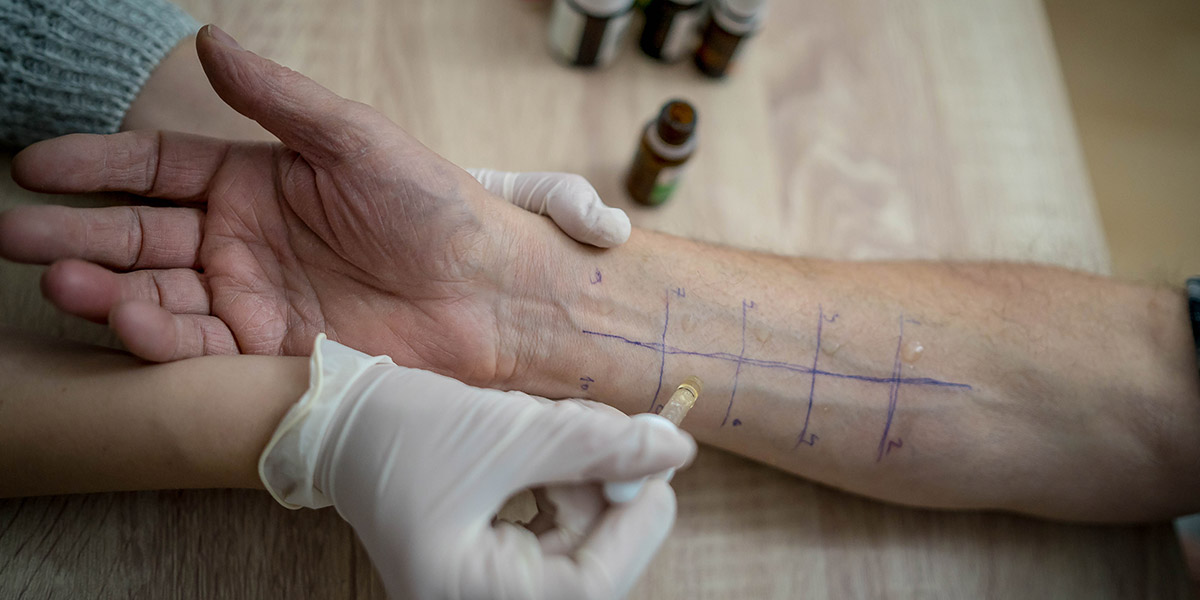What You Can Learn from Food Allergy Tests

You know your body, and you know when something isn’t right: a rash you can’t explain, lightheadedness, nausea or diarrhea for no obvious reason. Sometimes these symptoms appear after a meal. But other times, they appear at seemingly random times.
One possible explanation might surprise you: Food allergies.
Most allergies develop in childhood, but some people develop allergies, including food allergies, as adults. The main culprits in adult food allergies are peanuts, fish, shellfish and tree nuts. Most people have a reaction within 30 minutes of ingesting the trigger food, but in some cases that reaction takes a couple days.
Keep in mind that some food allergy symptoms also occur in other conditions, from the flu to urticaria (chronic hives). To know for certain whether a food is to blame for how lousy you feel, you’ll need allergy tests.
Skin Tests for Food Allergies
Allergy tests indicate whether your body is sensitive to a massive range of substances, including many foods, pollen, dust mites, certain medicines and latex.
Your doctor can perform several types of tests to diagnose food allergies, but skin tests are the most common and perhaps the most reliable.
Scratch or skin prick tests. This testing method has been used for more than 100 years. It can promptly indicate an allergy to as many as 50 different substances. Typically, a nurse performs the test and a doctor interprets the results. Here’s how it works:
- The nurse makes small marks on your skin, then applies a drop of allergen extract next to each mark.
- A fresh lancet for each allergen pricks the skin, enabling some fluid to get just below the surface.
- If you develop a reaction, such as a rash or a welt, you likely have an allergy.
There’s one more step worth mentioning – the one that helps ensure the integrity of the results. The nurse also “scratches in” two other substances:
- Histamine. This should cause a skin reaction. If it doesn’t, that means your skin might not react to the allergen extract even if you do have an allergy.
- Glycerin or saline. These should not cause a skin reaction. If they do, that means your skin might be sensitive, and the doctor should interpret results with this in mind.
Intradermal skin test. Instead of a surface scratch, you get a needle injection of a potential allergen under your skin. This test is commonly used for suspected allergies to insect venom or penicillin. Sometimes, it’s used to take a second look at an allergen extract already tested in the skin prick test.
The Problem with Blood Tests
Did you know a blood test can reveal whether you have certain allergies? Doctors look for the presence of a protein called IgE, short for immunoglobin E. It’s produced by your immune system as part of an allergic response.
There’s a definite appeal to a simple blood test for allergies. You get a single skin prick instead of the multiple jabs for a skin test. Plus, your blood sample goes to a lab, so you don’t have to wait around the doctor’s office for a skin reaction assessment.
These aren’t your doctor’s priorities, though. Because some allergic reactions are serious (such as anaphylaxis, a life-threatening event involving swelling of the mouth and throat), doctors want allergies diagnosed accurately and efficiently. With blood tests, however:
- Results may take a long time to come back
- False positives are not uncommon
- The cost is much higher than it is for skin tests
The Elimination Test (a.k.a. Elimination Diet)
If you’re concerned you may have a food allergy, but for some reason can’t see your doctor soon, consider a food elimination test. (You can learn more about it [here].) It’s most effective under a doctor’s supervision, but on your own you may still be able to pinpoint trouble foods.
To start, think about what foods you’ve eaten lately that could be a problem – especially new foods or additives you don’t usually eat. Eliminate those foods for a few weeks. Then, slowly introduce them back, one by one. Ideally, you’ll figure out what’s triggering symptoms of an allergic reaction.
If that doesn’t happen, don’t consider the effort wasted. An elimination test forces you to be mindful about your food choices. You may discover for the first time that certain foods contribute to joint pain, while others make you feel bloated. Just because you’re not allergic to them doesn’t mean you won’t benefit from less of them in your life – along with more of the foods that help you thrive.



